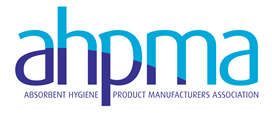Menstruation Facts And Figures
In a 1977 quality of life survey conducted by the Louis Harris Research Institute, British women rated disposable hygiene products second place only to electrical household goods as having had the most beneficial impact on 20th century lifestyles.
Menstruation
- There are around 15 million women of menstrual age in the UK.
- The average age for commencement of menstruation is 12.5 years. Due to improved diet and lifestyles, this is much earlier than would have been the case around 150 years ago when the average age would have been 17 years.
- On average menstruation will last until fifty years of age, for an average total of 37.5 years. This is an equivalent duration of 6.5 years during which there will be around 500 menstrual cycles.
- Menstrual cycles vary but on average there are 13 per year.
- Average menstrual flow is around 85g per cycle.
Product History
- Ancient Egyptians used rolled Papyrus leaves to make primitive tampons.
- Ancient Tribes used natural materials, usually grasses, moss etc.
- Early forms of tampons were in use some 2,000 years ago.
- The modern sanitary towel/pad was invented during the early part of the last century. Dr White’s was the first towel. It was very bulky. Modern pads and liners are very discreet and are held in place by adhesive strips.
- During the 1990’s new ‘ultra’ style highly absorbent thin pads came onto the market. These thin towels helped pads to regain popularity.
- A doctor in the USA invented the first tampon for his wife, a nurse. She encouraged development of a more suitable product to be placed on the market. The resulting product was marketed by Tampax in the USA in 1937 and reached the UK market by 1939. This new product was met with a great deal of resistance from politicians and the clergy. Bishops complained in the House of Lords about these ‘sinful products.’
- Until as late as the 1950’s, every packet of tampons had to carry the warning ‘Not suitable for unmarried women’, for fear that virginity might be impaired, which was of course untrue.
- Early tampons had paper applicators. Digital/non-applicator tampons (inserted with the finger) were launched in the 1940’s. Applicators are made from either paper or plastic.
Product Usage
- Around 22 items of menstrual products are used per cycle and around 11,000 products will be used in a lifetime.
- 4.3 billion items are used per year in the UK.
- Re-useable menstrual hygiene products such as menstrual cups are also available.
- Liners are very adaptable products used to absorb everyday discharge, for extra protection during a period or for when menstrual flow is very light. Many choose to use pant liners for personal freshness throughout the month.
- Many choose to use a combination of towels, tampons and pant liners for their requirements and pads are also used following childbirth for around one month, for the absorption of lochia.
